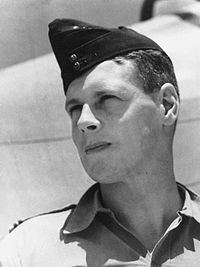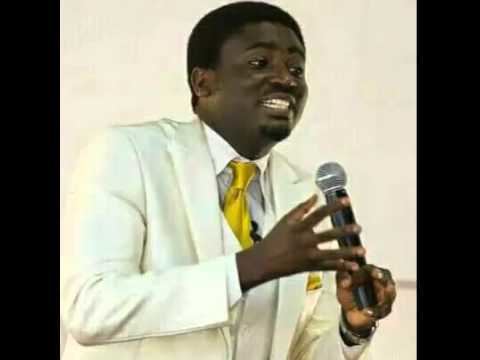Nickname(s) "Woof" Name Wilfred Arthur Allegiance Australia Died December 23, 2000 | Years of service 1939–46 Battles and wars World War II Service number 565 Rank Group captain | |
 | ||
Battles/wars World War IIMediterranean and Middle East TheatreNorth African CampaignSouth West Pacific theatreNew Guinea CampaignBattle of Tarakan Unit No. 3 Squadron RAAF (1940–1942), No. 76 Squadron RAAF (1942–1943), No. 71 Wing RAAF (1943) | ||
Loving his appearing by rev dr george wilfred arthur
Wilfred Stanley Arthur, (7 December 1919 – 23 December 2000) was a fighter ace and senior officer of the Royal Australian Air Force (RAAF) during World War II. Commonly known as "Woof", and sometimes "Wolf" or "Wulf", he was officially credited with ten aerial victories. As a commander, he led combat formations at squadron and wing level, becoming at 24 the youngest group captain in the history of the RAAF.
Contents
- Loving his appearing by rev dr george wilfred arthur
- Dr george wilfred arthur 3
- Education and early career
- North Africa
- South West Pacific
- Post war life
- References

Arthur joined the Air Force the day after Australia declared war in September 1939. He first saw action with No. 3 Squadron in North Africa, where he was awarded the Distinguished Flying Cross for shooting down four aircraft in a single sortie. Posted to the South West Pacific, he commanded first No. 75 Squadron, and later Nos. 81 and 78 Wings. He earned the Distinguished Service Order for continuing to lead an attack on a formation of Japanese bombers after discovering that his guns were inoperable, and was twice mentioned in despatches. Arthur also played a leading part in—and gave name to—the "Morotai Mutiny" of April 1945. Pursuing various interests in Australia and Vietnam following his discharge from the Air Force after the war, he died in 2000 at the age of 81.

Dr george wilfred arthur 3
Education and early career
Wilfred Arthur was the son of stock inspector Stanley Oswald Darley Arthur from Goondiwindi, Queensland, a veteran of World War I who had served overseas for the duration of the conflict. His mother, Helena Elizabeth Chaffers, was from the Isle of Wight, of Welsh descent. Born in Sydney on 7 December 1919, Wilf grew up around his father's home town near the New South Wales border. The boy's early education was by correspondence, but he later attended school at Yelarbon, Queensland, commuting on horseback. He then spent four-and-a-half years at The Scots College in Warwick, where he matriculated.
At the age of 19 and still at The Scots College, Arthur applied to join the Royal Australian Air Force (RAAF). He enlisted on 4 September 1939, the day after Australia's entry into World War II. Training at RAAF Station Point Cook, Victoria, and RAAF Station Richmond, New South Wales, he was commissioned a pilot officer on 30 March 1940, despite being prone to airsickness early on. He served initially with No. 22 (City of Sydney) Squadron at Richmond, operating Hawker Demons and Avro Ansons.
North Africa
Promoted to flying officer, Arthur was posted to No. 3 (Army Cooperation) Squadron and departed with the unit for North Africa in July 1940. Piloting a Gloster Gladiator biplane, he scored his first aerial victory by shooting down an Italian Fiat CR.42 north-west of Sofafi, Egypt, on 12 December. The next day he himself was shot down by a CR.42 and had to bail out, narrowly avoiding disaster when he became entangled first with his oxygen hose and then with the Gladiator's wing-bracing wires; he was only torn loose at a height of 1,000 feet (300 m) by the force of rushing air as his stricken plane fell to earth. Arthur claimed one further victim in a Gladiator before his unit re-equipped with Hawker Hurricanes in January 1941. He was flying a Hurricane when he shot down a Messerschmitt Bf 110 in April.
No. 3 Squadron began replacing its Hurricanes with P-40 Tomahawks in May 1941. In October, Arthur was promoted to flight lieutenant and appointed a flight commander. He shot down four enemy aircraft in a single sortie near Bir El Gubi on 30 November. Flying one of No. 3 Squadron's new Tomahawks, he claimed two Junkers Ju 87 Stukas, one Fiat G.50 and one Macchi MC.200. He destroyed the last of the four after his plane had been damaged and he was on his way back to base; he had to land in the desert and make his way to the airfield on foot. His "great skill and gallantry" in this action earned him the Distinguished Flying Cross (DFC), which was gazetted on 20 January 1942.
Around this time, Arthur met his future wife, Lucille, in a shop in Alexandria. They married on 24 December 1941 and honeymooned in Palestine and Syria. The sudden romance came as a shock to Arthur's parents; he later recalled, "the first letter I got was a fair imitation of panic I think". While on leave, he was also able to make contact with his brother Norman, who was serving as a military policeman in Beirut. Completing his tour with No. 3 Squadron, Arthur was repatriated to Australia with his new bride in March 1942. Their ship journeyed to Melbourne via Bombay and Colombo, where it picked up many refugees following the recent fall of Singapore. The couple eventually had four children.
South-West Pacific
As the Japanese advanced in the South West Pacific during early 1942, the RAAF hurriedly established three new fighter units for Australia's northern defence, Nos. 75, 76 and 77 Squadrons. Arthur was posted to No. 76 Squadron in April, flying P-40 Kittyhawks in New Guinea. His brother Norman was killed in action on 9 November 1942 while serving with the 2/31st Infantry Battalion in Papua. Promoted to squadron leader, in February 1943 Wilf succeeded Les Jackson as commanding officer of No. 75 Squadron, based at Milne Bay under the control of No. 9 Operational Group RAAF. Arthur developed a reputation for diligence, courtesy, and concern for the welfare of his men. Despite the fact that, at 23, he was the youngest officer in his new squadron, he commanded the respect of his fellows because, he believed, "they like that I work hard; they like that I am not frightened of anything (i.e. Pretends not to be) and above those, they like that I don't boast". Having shot down a Mitsubishi G4M "Betty" bomber on 10 March, Arthur was awarded the Distinguished Service Order for his "gallantry, matchless leadership and devotion to duty" on 14 April 1943. On this occasion, in spite of his guns jamming, he led 34 Allied aircraft, including Kittyhawks of Nos. 75 and 77 Squadrons and P-38 Lightnings of the USAAF, in "a determined head-on attack" to intercept 100 Japanese raiders, 14 of which were destroyed by the defenders. Arthur described the situation of being in combat but unable to shoot as "sort of awkward. Fortunately nobody else would know except me." To compensate for his lack of offensive weaponry, he repeatedly made as though attempting to ram one of the raiders, to try and force it down into the sea.
Promoted acting wing commander in June 1943, Arthur became wing leader of No. 71 Wing, which controlled No. 75 Squadron and three other combat units. On 5 November, he was involved in a collision at Kiriwina Airfield with a Spitfire of No. 79 Squadron. The Spitfire pilot was killed, and Arthur received serious burns. He later recalled, "... I felt my hands disappear, felt my face go but the rest of my body was ... was just flames ... And then all of a sudden the flames dropped down a bit and I got out and went like mad and I was running away from the aircraft and trying to guess how far I could go before I'd try to put the flames out ..." Although his family was informed that his injuries were "of a very slight nature" and that he had been "burnt but not badly", Arthur was close to death for weeks while he was treated in Kiriwina. He was finally repatriated to Sydney where he underwent plastic surgery at Yaralla Military Hospital (now Concord Hospital). After his recovery in April 1944, he attended a staff course before taking over command of No. 2 Operational Training Unit at Mildura, Victoria. In August, at the age of 24, he was promoted to temporary group captain, the youngest in the RAAF. That December he took command of No. 81 Wing of the Australian First Tactical Air Force (No. 1 TAF), based at Noemfoor and Labuan in the Dutch East Indies.
In April 1945, having recently assumed command of No. 1 TAF's No. 78 Wing, Arthur helped trigger an incident that became known as the "Morotai Mutiny" (a phrase originating in one of his aide memoires at the time). He was one of eight senior pilots, including Australia's top-scoring ace, Group Captain Clive Caldwell, and fellow veterans from the North African campaign, Bobby Gibbes and John Waddy, who attempted to resign their commissions in protest at the relegation of RAAF fighter squadrons to apparently worthless ground attack missions. Frustrated at the lack of attention paid by Headquarters No. 1 TAF to a "balance sheet" he produced showing that operational losses outweighed results, Arthur later said that his object for the "mutiny" was to "make as big a fuss as I possibly could with the object of getting the position corrected." A government inquiry into the incident exonerated the pilots, finding their motives in tendering their resignations to be sincere. Arthur remained in charge of No. 78 Wing for the Battle of Tarakan, which commenced on 1 May. He handed over command of the wing on 24 May, but remained on Tarakan until the end of the war.
In addition to receiving the DFC and DSO, Arthur was twice mentioned in despatches during the war. His official final tally of victories was ten enemy aircraft destroyed, though this has also been reported as eight confirmed kills and two "probables". Reflecting later on being a fighter pilot throughout his military career, Arthur said that he was glad to have flown single-seat aircraft rather than bombers, because "I would always have felt very uncomfortable with anybody else for whom I'd be responsible".
Post-war life
Arthur was discharged from the RAAF on 14 February 1946, and took up residence in Darwin, Northern Territory. Initially working for the Repatriation Department, in 1950 he joined the Australian School of Pacific Administration, and later travelled to Vietnam to establish a dairy farm at Bến Cát under the Colombo Plan. He was captured by the Viet Cong in 1961 and was not released until a ransom was paid—reportedly an Olivetti typewriter. He continued to work in Vietnam after this incident, and by 1966 was running a business supplying duck feathers to the American military for use in life jackets. Returning to Australia, he was administration manager for Geopeko, the exploration unit responsible for discovering the Ranger uranium deposit at Jabiru. Wilf Arthur died on 23 December 2000, at the age of 81. The Kittyhawk "Polly" that he flew in his DSO-winning action of 14 April 1943 was purchased by the Australian War Memorial, Canberra, in 1992 and put on display in its Aircraft Hall.
